
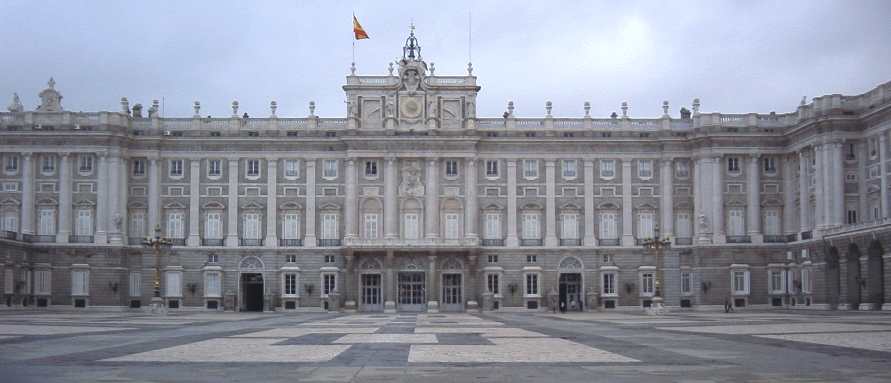
My last morning in Madrid was spent in the Royal Palace (Palacio Real) area where the two main sites are the new gothic cathedral (pretty minor) and, of course, the Royal Palace (big time stuff).
Felipe V commissioned the Palacio Real in 1734 to replace the Habsburg fortress destroyed by fire. Being a Bourbon and raised in Versailles, Felipe wanted something in the French style. He didn't get it as the construction (26 years) outlasted him (Are French and fast antonyms?); but Felipe's successors lived in the virtually fireproof neoclassic palace until 1931 when Alfonso XIII abdicated. Today it is used for ceremonial occasions by the current Bourbon royal family.
While French in concept, the original design is by the Italian Giovanni Batttista Sachetti with later modifications by Ventura Rodriguez who appears to be able to work on more than the Madrid fountains we've seen in earlier pages on this site.
One enters the palace from the Plaza de la Armeria (named after the royal armory which today is a museum of weaponry and armor). This wide courtyard is shown at the top of this page. The palace is a square with extended arms (long, like the Louvre). Including these arms, its length is about a kilometer. It has 240 balconies and 870 windows.
Here's a closer view of the outer East side:
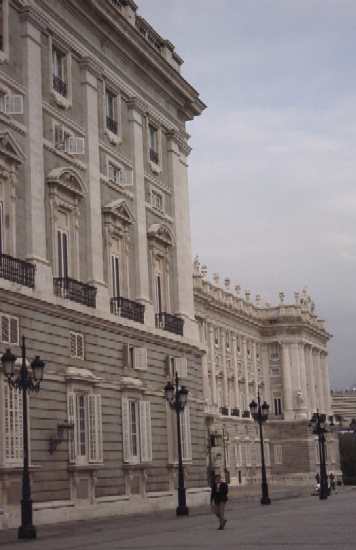
Inside, the Palacio Real delights the eye as well. Here's a painted ceiling, one of several in the palace done by Venetian Rococo artist Tiepolo in the 1760s.

Here's the royal chapel, complete with the king and queen's lavish pew and a little heavenly radiance (or camera misexposure):
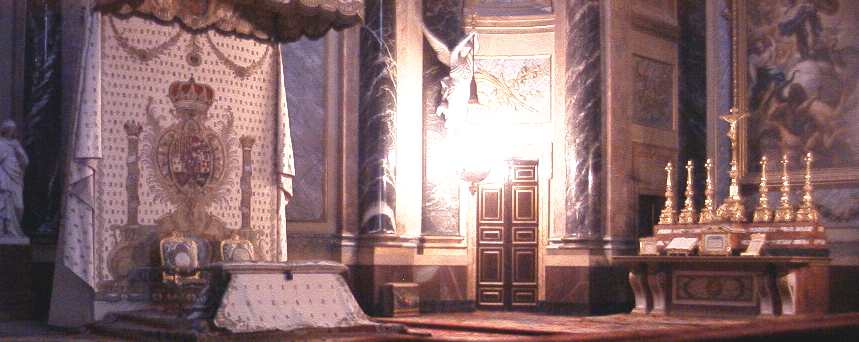
The chapel also sports a muraled dome by the Italian Rococo master Giaquinto but it's pretty hard to see from the angle above. Giaquinto served as official court painter and as head of the Spanish Royal Academy.
Heres the Throne Room, with exact reproductions of the gold and scarlet thrones as they were in Charles V's day...

...and the dining room for the King and his 144 closest friends who would be expected to ogle the Brussels tapestries:
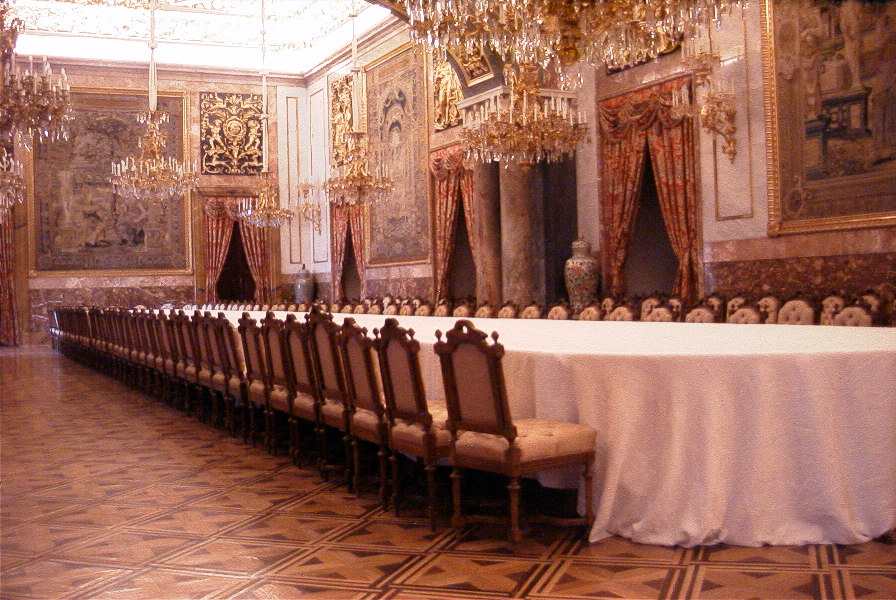
Outside to the east (of course) is the Plaza Oriente sporting many statues of early Spanish kings including the first equestrian bronze of a horse rearing up (it took Galileo to figure out how to keep the work from toppling over). These many statues were supposed to be placed on top of the Palacio Real but were too heavy.
At the extreme end of the Plaza is the hexagonal opera house, the Teatro Real, with its pillars showing at the front right of the picture below.
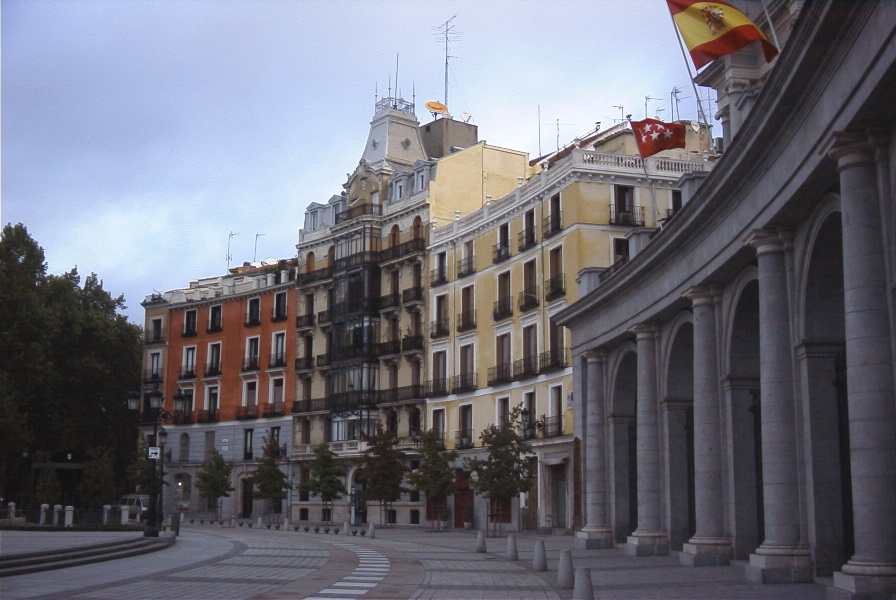
To this day, the Plaza Oriente is linked to memories of Francisco Franco who would make his speeches from the roof of the Palacio to those in the plaza below during his 37 years as probably the most powerful (at least internally) ruler Spain had ever seen.

Across from the Palacio, as shown in the above picture, is Madrid's official cathedral.
Being a Catholic country, you'd expect Spain's capital city would have a lavish cathedral. In fact, the Church of Nuestra Señora de la Almudena facing the Royal Palace is as gothic as we'd want but extremely plain inside, especially when compared to the sumptuously decorated cathedrals in some other Spanish towns.
While the name may seem strange to American ears, it means "Our Lady of the Wheat Deposit," after an icon found near a wheat silo shortly after the Moors were bested by Alfonso VI in 1085. Later the Almudena Virgin became Madrid's patron saint.
The Cathedral's sterility is primarily due to its newness: the cathedral was started late (1879) and just completed in 1993 whereupon it was blessed by Pope John Paul II.
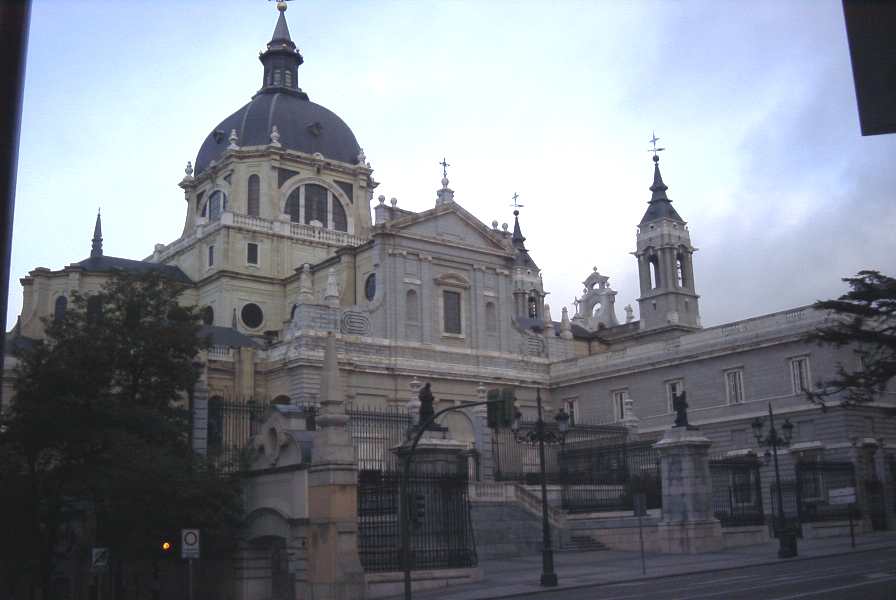
Inside is a plain but sweeping nave:
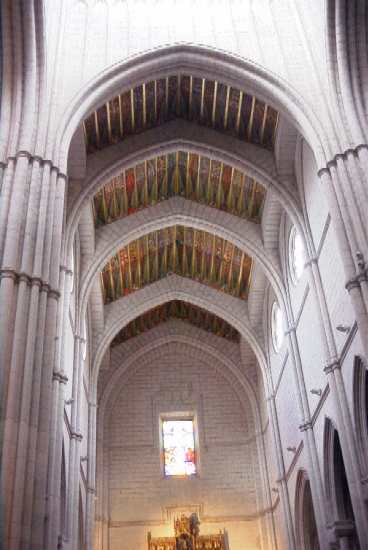
Walking through the nave, we see the altarpiece, gold as in most Spanish cathedrals, but much smaller than what we will see later in Sevilla and Granada:
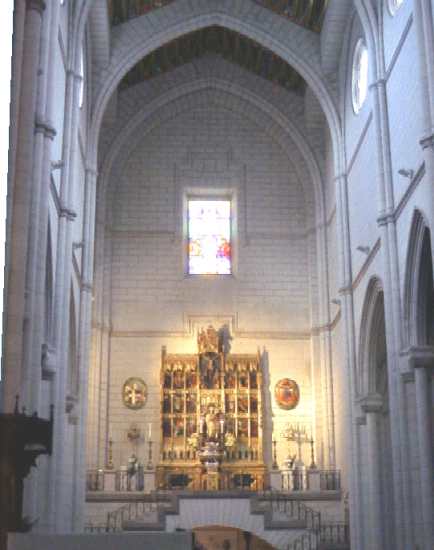
Here's a closer shot:
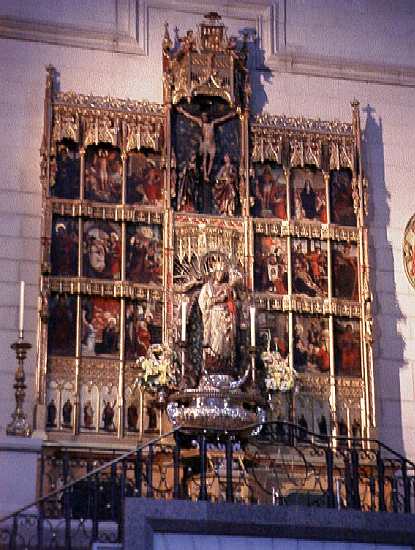
Here's a view of the organ. As you can see from the exposure, gothic church architecture had been pretty well mastered by the late 19th century allowing larger windows to supply ample light inside the cathedral:

Much of the stain-glass windows are new, but still beautiful in a modern way (as Spain has not shortage of modern artists):
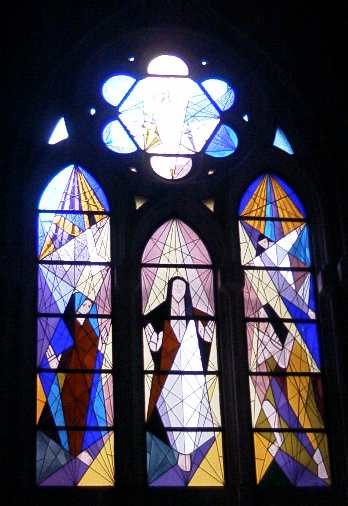
Then it was time for lunch and a walk in Madrid's version of Central Park: The Retiro Park. Please join us by clicking here.
Where do you want to go today? Here's a few choices:
